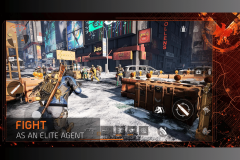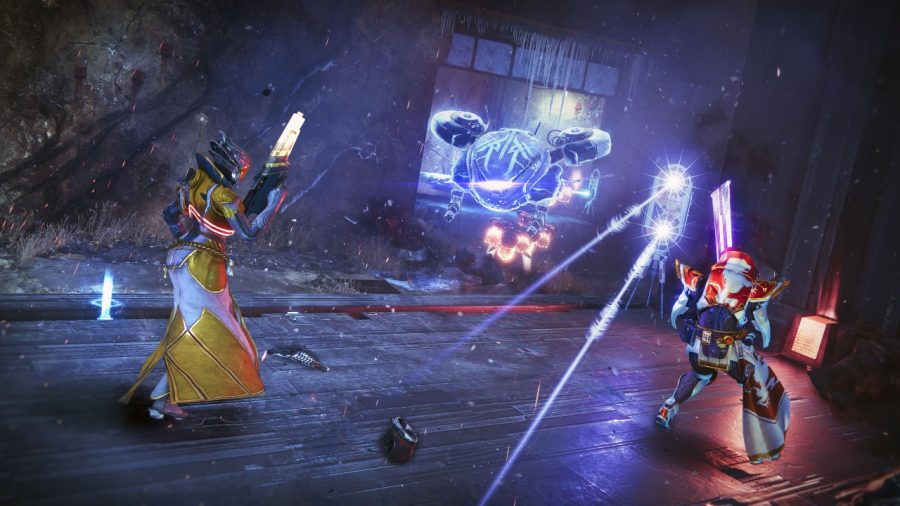How many times have you found yourself in possession of a whole lot of digital content that should be tied to a very specific physical place, maybe even a particular spot in a room, but with no easy way to tie together the two dimensions of online ephemera and real-world location? Maybe that doesn’t happen to you very much yet, but if you worked at a museum – it would happen all the time. And wouldn’t you like to imagine yourself working at a museum? I suspect you would.
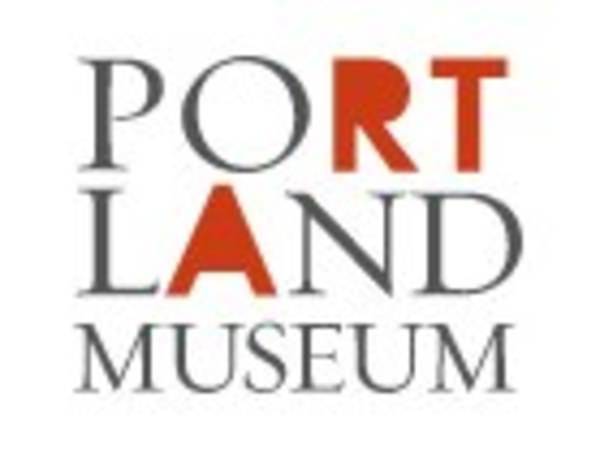
The good people at the Portland Art Museum in Oregon found themselves in just such a situation and have leveraged an interesting new mobile publishing platform in order to capture some of the value of place-based digital content in order to share it with their patrons.
This morning the museum launched its big Summer exhibit, a retrospective of historic automobiles. In one of the most vehemently bike-centric cities in the country, a Summer showcase of gas-guzzling but beautiful old automobiles is an interesting and bold choice to make. The same institution is engaged in a similar experiment with its new mobile app, which ties information about key works of art with the iPhones of its visitors.
The new Portland Art Museum iPhone app is built on top of a platform called Meridian, by a company called Spotlight Mobile. The platform provides content and venue owners a super-simple graphic user interface to upload digital assets, input text and other information and then click to associate those assets with a very particular place in a particular room on a map.
While publishing, users are encouraged to recite with a dramatic flair and a magician’s voice the words, “art history, from around the world…get into this phone!” (Just kidding – but it is something magical, is it not?)
As you might imagine, the app lets you select your location or key in an exhibit number and then enjoy the digital assets on your phone, in some cases a video or audio lecture about a particular piece of art – in other cases simply more text content than is displayed off-line. The museum will roll out a new section of the app for the historic auto show beginning today. Spotlight says that Android versions of its apps will be launching in the coming weeks.
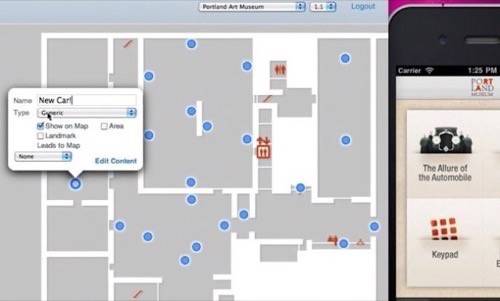
A user’s location isn’t automatically detected in this app, though Spotlight Mobile says that it does just that at the American Natural History Museum in New York through a technology partnership with CISCO.
In addition to media assets, the app also offers maps and will soon offer dynamic directions to get from one part of a venue to another.
The best part of all this of course is the Content Management System. Just as blogging democratized the world of text publishing beyond the technical elite who practiced it first online, and sites like Flickr and YouTube made media publishing easy – Meridian falls into the same class of technologies by making it drop-dead simple for anyone to publish their content in an app format and tie it to very specific places. That’s very cool.
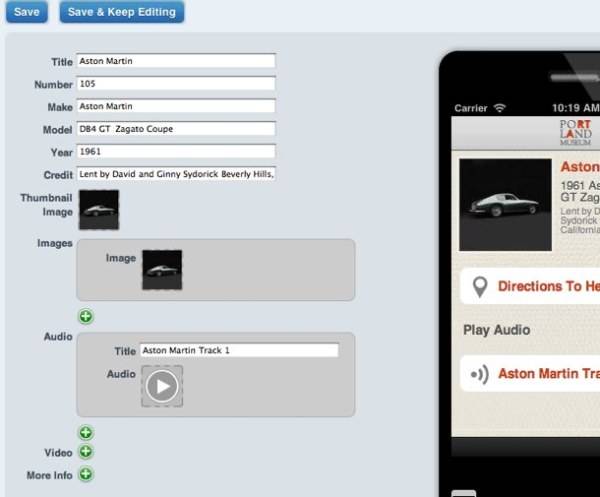
The question this raises, then, is: so how much content can I as a patron get about the art I’m standing in front of? Unfortunately, in the case of the Portland Art Museum – not very much. Art snobs often turn their nose up at the Portland collection (I live in Portland and think they are wrong – I like it quite a bit) but this technology snob (?) has to say that the mobile offering is far too sparse today. If the dream is of standing in front of any piece in the museum and learning more about it, of peeking through your phone into another dimension where the art’s history and context stand clearly visible around it – that remains a dream for now. How many pieces in the Portland Art Museum’s permanent collection have media available on this app? I hesitate to even say it explicitly, but it’s…eleven. Ouch.
Of course anyone else who’s jumped into the new world of democratized publishing online knows that when it’s said these technologies make it easy – that just means it’s easy to click a button and have content go live. That doesn’t make it any easier to find the time, inspiration and skill to actually produce the content that will then be published.
I used to stand in front of works of art at the museum and suspect that the museum itself had a whole treasure trove of additional information about what I was looking at, beyond what was posted on the wall. Now I’m not so sure. Maybe they do and it’s just not in a friendly format.
The end result is an experience that’s promising but for now a little disappointing. Hopefully a lot more content will be created and published over time. I suspect there is a lot more information about much of this art out on the internet – perhaps if there was a way to efficiently vet and build on it then all of this would be made easier.
Such is one of the key challenges of our time, though. Now that anyone can publish – what will you say? How will you do it? Placing that challenge of media transformation and newfound ease in the context of mobile and specific location, especially for venerable institutions like art museums, is a very interesting prospect.
